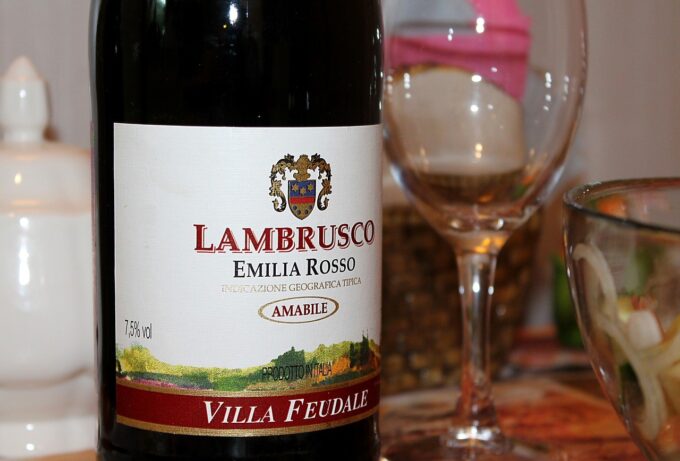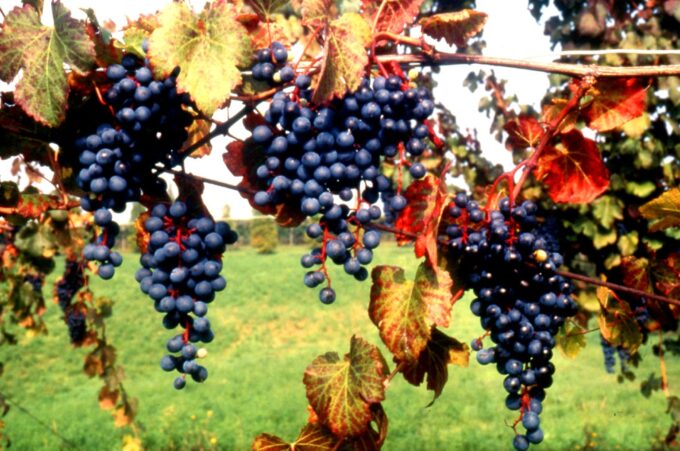
When you think of Italy, what comes to mind? For some, it might be the tremendous ancient history dating back to the Roman Empire and Greek conquests. For others, it might be the country’s beautiful architecture or world-class artists such as Michelangelo, Raphael, and Leonardo da Vinci. However, we can all agree that while all of these are excellent reasons to visit Italy, one of its main attractions remains its amazing cuisine and great wine culture. Italian food and wine are known and enjoyed all over the world.
What Is Lambrusco Wine?
Lambrusco wine is a sparkling, versatile wine made in the Emilia-Romagna region in Italy. Known for being fruity and rich, it’s a great wine that pairs well with many different types of foods. According to Eric Asimov of The New York Times, “A good Lambrusco is dry and fresh – frothy and almost purple in its classic version, yes, but full of tangy fruit and subtle earthy flavors that are ideal on a summer night.” We couldn’t agree more. There’s a reason why Lambrusco is one of the most exported wines in all of Italy. So, let’s delve into the rich history of this delightful wine and discover how it came to be one of the most popular wines in Italy.
The History of Lambrusco Wine
Lambrusco grapes have a rich and varied history. They can be traced back to the Roman Empire and were often called “wild” because of their overrun growth throughout the countryside. No matter where nomadic armies and hunters went, they could find these grapes. While there are more than 60 varieties of Lambrusco grapes, some varieties are more popular than others. These include Lambrusco Salamino, Lambrusco di Sorbara, Lambrusco Grasparossa, and Lambrusco Dolce.
How Lambrusco Wine Is Made
Lambrusco wine is known for being sparkling, but how exactly does it get its bubbles? This can happen in three ways: the Charmat method, the Ancestral Method (Metodo Ancestrale), and the Metodo Classico.
Charmat Method
Charmat also known as the tank method, is usually the method used to make affordable Lambrusco wines. It’s the same method used to make prosecco, where the winemaker adds yeast and sugar to the wine in a pressurized tank so that the sugar can ferment and release carbon dioxide. This results in inexpensive wines that aren’t as complex as their counterparts.
Metodo Ancestrale
High-quality Lambrusco wines are made using the ancestral method. The Metodo Ancestrale consists of wines being bottled while going through alcoholic fermentation. The sugar ferments in the bottle and creates both carbon dioxide and degrees of alcohol. This kind of Lambrusco wine is lightly sparkling, or frizzante.
Metodo Classico
The Metodo Classico, or the classic method, is usually used to make premium Lambrusco wine. This wine has longer-lasting bubbles and is more elegant. However, it doesn’t have the quintessential rustic quality that Lambrusco is known for.
Is Lambrusco Wine Sweet?
When Americans think of Lambrusco wine, “sweet” is the word that comes to mind. Lambrusco was made popular in the United States in the 1970s and 1980s but consisted of a cheaply made, overly sweet, mass-produced variety. As a result, it’s often misjudged. However, this is not Lambrusco’s legacy – the wine is making a strong comeback and changing minds. While it’s primarily known as sweet in the U.S., Lambrusco wine comes in both sweet and dry styles. Are you looking for the perfect Lambrusco wine? Keep a lookout for these labels to help guide you.
Secco (Dry)
Secco Lambrusco wine contains plenty of sugar but the bubbles and acidity balance this out in the wine. You’ll likely see a deep red color and taste not only fruit but also savory and earthy flavors.
Semisecco (Off-Dry)
These are some of the most common Lambrusco wines that you’ll come across. While they aren’t overly sweet, you can taste the sweetness they have. They’re the classic frizzante style and are usually made using the Charmat method.
Amabile (Semi-Sweet)
These semi-sweet Lambrusco wines aren’t as popular as the drier varieties, but there’s still a market for them. They’re not as complex as other varieties.
Dolce (Sweet)
Are you looking for a sweet Lambrusco wine? Look for “dolce” on the label. These wines are much sweeter than Amabile Lambrusco wines and have a very fruity taste. Consequently, they’re great to pair with dessert.
Must-Try Lambrusco Wine Pairings
It’s a real treat to pair a great glass of wine with equally delicious food. There’s no wine quite like Lambrusco to pair with food, and while it is best paired with food from the Emilia-Romagna region, there are hundreds of possible pairings you can opt for.
Lambrusco Salamino
This common Lambrusco wine is known for being full-bodied. With a deep color and both fruitiness and acid, this makes the perfect pairing for pasta and tomato sauce.
Lambrusco di Sorbara
This wine is light-bodied and more delicate than other varieties, making it great for pairing with classics like shrimp scampi and pasta carbonara. Whether you opt to pair it with seafood or some mouth-watering pasta, you’ll be able to enjoy the simplicity of the dish since the wine is so light.
Lambrusco Dolce
One would think that the sweetest of Lambrusco wines would be restricted to dessert, but this isn’t necessary. It goes equally well with sweet and savory food and complements cheeses like Parmigiano, Romano, and Pecorino.
Lambrusco Grasparossa
Not into something sweet? No problem. Lambrusco Grasparossa balances fruit notes with more earthiness and tannin and is the perfect companion to fatty foods like Chicken Milanese, gnocchi, and Italian sausage.
Lambrusco Rosé
If you’re a rosé fan, definitely try Lambrusco Rosé with a light meal like an arugula salad or a frittata. This fresh and light wine is a match for lighter foods and is sure to leave you wanting more.
All Lambrusco
Are you looking for a more general suggestion? Embrace the Emilia-Romagna cuisine and try Lambrusco wine with meals like salami, pork, prosciutto, and porchetta. Alternatively, opt for pizza or any creamy pasta.
Emilia-Romagna
For authentic Lambrusco wine pairings, there’s nothing better than to go to the source itself. If you visit the Emilia-Romagna region with us you will learn much more about Lambrusco wine – it might just turn out to be your new favorite.
